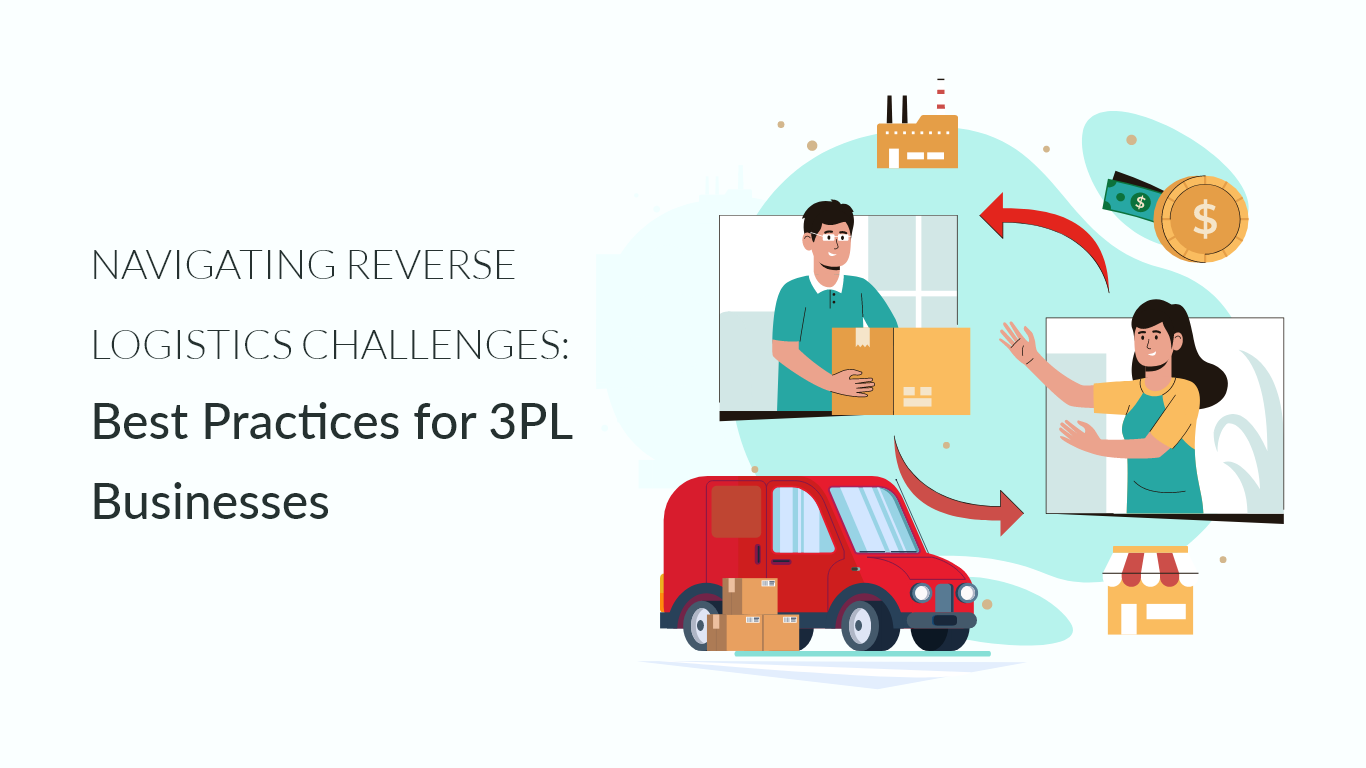Navigating Reverse Logistics Challenges: Best Practices for 3PL Businesses

What is Reverse Logistics?
Before addressing the difficulties of reverse logistics, it’s important to understand this process. Reverse logistics involves the management and transportation of products or materials moving in the reverse direction of the usual supply chain. This may involve returning defective products, managing surplus inventory, or disposing of items at the end of their lifecycle. Reverse logistics aims to extract value from products that might otherwise be discarded, transforming them into useful resources.
Reverse logistics poses several challenges for businesses. These challenges can be categorized into operational, financial, customer-related, and technological aspects:
Operational Challenges
Complexity in Handling Returns:
Managing returns involves inspecting, sorting, and processing returned products, which can be more complex than forward logistics. Products can be in various conditions and may require different actions (e.g., refurbishment, recycling, or disposal).
Lack of Standardization:
Unlike forward logistics, where processes are often streamlined and standardized, reverse logistics lacks standardization. This can lead to inefficiencies and increased handling times.
Inventory Management:
Keeping track of returned goods and integrating them back into the inventory system can be challenging. This often requires sophisticated inventory management systems to track the status and location of returned products.
Transportation and Warehousing:
The logistics of transporting returned items back to distribution centers or warehouses can be complicated and costly. Additionally, space must be allocated for holding returned goods, which can disrupt warehouse operations.
Financial Challenges
Cost Management:
Reverse logistics can be expensive due to the costs associated with transportation, handling, inspection, and processing of returns. These costs can quickly add up and impact the overall profitability of a company.
Uncertainty in Value Recovery:
The value that can be recovered from returned goods is often uncertain and can vary significantly. Some items may be resold as new, others as refurbished, and some may only have value as recycled materials.
Refund and Replacement Costs:
Handling customer refunds or replacements can be a financial burden, especially if the return rates are high. This includes not only the direct cost of the refund or replacement but also the administrative costs involved in processing these transactions.
Customer-Related Challenges
Customer Satisfaction:
Managing customer expectations and satisfaction during the return process is critical. Customers expect a hassle-free return process, and any delays or complications can lead to dissatisfaction and damage the company’s reputation.
Return Policies:
Developing and enforcing return policies that balance customer satisfaction with business sustainability can be challenging. Policies that are too lenient may encourage more returns, while stringent policies may deter customers from making purchases.
Technological Challenges
Integration of Systems:
Integrating reverse logistics processes with existing supply chain management systems can be technologically challenging. It requires robust IT infrastructure and software solutions to handle the complexities of reverse logistics.
Data Management:
Managing and analyzing data related to returns, including reasons for returns, product conditions, and customer feedback, is essential for improving reverse logistics processes. However, collecting and utilizing this data effectively can be difficult.
Navigating Reverse Logistics Challenges
Invest in Infrastructure:
To overcome the challenges of reverse logistics, it’s important for businesses to allocate resources towards building the necessary infrastructure. This could involve adopting technology tailored for managing returns, establishing partnerships with third-party logistics providers, or recruiting personnel with specialized knowledge in reverse logistics.
Emphasize Communication:
Clear and consistent communication is paramount in handling the challenges inherent in reverse logistics. Establishing transparent return policies, providing regular updates to customers throughout the return process, and maintaining honesty in interactions with customers are key components of effective communication strategies.
Prioritize Compliance:
Adherence to regulations is non-negotiable in the realm of reverse logistics. Businesses must stay informed about relevant regulations concerning waste disposal, recycling, and product safety. This might entail enlisting legal expertise or collaborating with third-party compliance firms to ensure full compliance with regulatory requirements.
Utilize Data and Analytics:
Harnessing the power of data and analytics can greatly benefit businesses in managing the complexities of reverse logistics. By monitoring essential metrics such as return rates, processing times, and transportation costs, businesses can pinpoint areas for enhancement and make informed decisions to streamline the process.
Conclusion
Reverse logistics can be a powerful tool for businesses seeking to reduce their environmental impact and save money, but it brings a lot of challenges that need to be overcome. Through investments in infrastructure, effective communication, adherence to regulations, leveraging data and analytics, and a commitment to sustainability, businesses can conquer these challenges and establish a successful reverse logistics system.
If you are ready to improve your reverse logistics management or looking for a solution to increase efficiency, go to eComGlobus.
